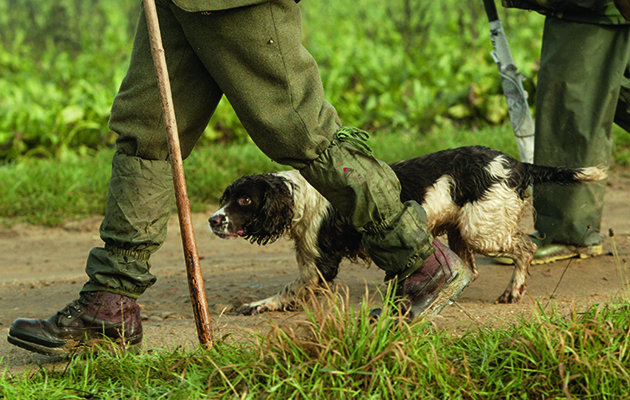Is your gundog ready for its first shoot day?
When can you be confident of launching a youngster in the field? Here's how to avoid an embarassing disaster.

Your dog must walk to heel off the lead before experiencing a shoot day
Tips for a gundog’s first shoot day
- Whilst you might want to take a youngster out on partridges in September, it might be wise to delay the dog’s formal introduction until later in the season
A few months can make a huge difference to a young dog’s ability and maturity so think long-term. - A successful few weeks at the end of the season will bring dividends in the years ahead, rather than rushing an unprepared and raw youngster that ends up spending most of the season having to be bolted down to the peg or even left in the car.
- Last-minute cramming doesn’t work with gundogs. Far better to go over some solid, basic work with the emphasis on steadiness.
- Maintain the dog’s routine on the morning of the shoot day, so if he’s used to a run and a modest feed stick with it.
- If you feed your dog on dry food, add some water on this occasion – your dog will dehydrate during the journey to the shoot and may well not drink as much as he should during the day.
- Feed well ahead of your departure time and make sure the dog has emptied itself before you leave.
- It’s a good idea to load your young dog into the car in plenty of time and not at the last minute. If departure is in a panic a young dog will pick up on the stress.
- Make sure the keeper or shoot captain knows you have a new and inexperienced dog and choose a day that’s likely to give you an opportunity to work your dog with confidence.
- A dog making his debut at the peg shouldn’t be expected to last all day.
- Choose selected drives if you can or just part of the day.
- You want to give your dog every opportunity to succeed and not to fail.
- With a picking-up dog, choose your drives if you can and err on the side of training for steadiness – it will make that first retrieve even more satisfying.
- At the first opportunity after arriving, and having undertaken the necessary courtesies, make sure you let your dog out of the car – on a lead of course – and give it the chance to relieve itself after the journey.
- Always give dogs a drink on arrival.
- Once the dog is settled back in the car – and has adequate ventilation – you can join fellow guns or pickers-up for the pre-shoot gathering.
- Whether a gun or part of the picking-up team, your young dog can be easily overawed by being hoisted out of the car into a sea of other dogs. Your dog has been plunged into a canine hierarchy at ground level. Be mindful of this to avoid any untoward happenings that may thwart your day.
- Guns with a new dog should pick the first retrieve with care.
- If there’s a chance your dog is going to have its efforts undermined by the difficulty of the retrieve, or by having the bird snatched by another dog, it’s far better to wait until the right opportunity presents itself.
- If the morning has been a success, be happy to rest on your laurels and leave the dog in the car for the remainder of the day – making sure of course the vehicle is secure and there is adequate ventilation.
- Don’t put a wet dog back into a dog box without first giving a quick rub down with a towel.
- After you have dried the dog, give it a light feed and a drink and leave it all to sink in while you retire to the shoot lunch.
- A couple of good retrieves on the morning of the first day will do, but you also want to take home a dog which has enjoyed the experience and has used it as an invaluable part of its education.
- You don’t want is a dog that is cold, hungry and uncomfortable, has been over-worked, has under-achieved and felt totally overwhelmed by the occasion.
- Relish the first day with your new dog – but make sure you do as much as you can to ensure there are many more to follow.








